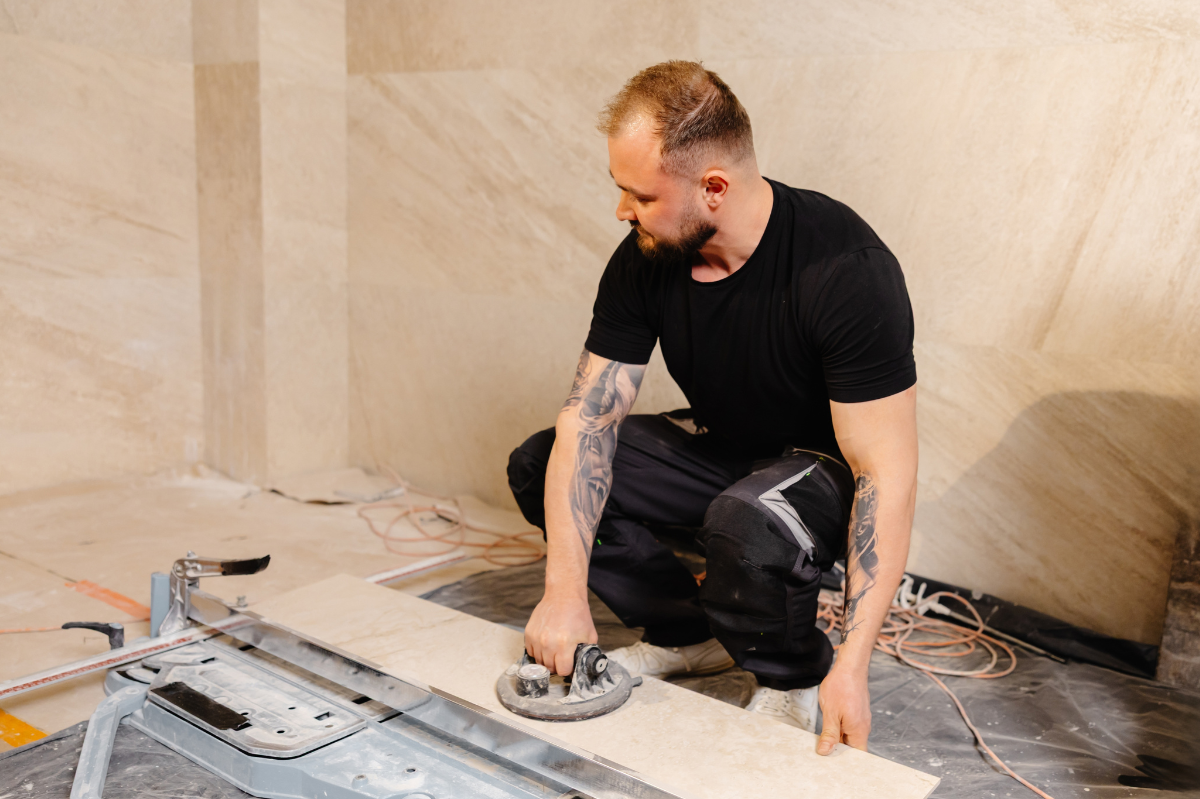Sealing tile shower walls is an essential part of maintaining a bathroom’s functionality and aesthetic. Over time, water can seep into the grout lines between tiles, leading to mold, mildew, and water damage.
Sealing your tile shower walls will protect the grout and tiles, ensuring they remain in top condition and resist water damage. This guide will walk you through the process of sealing tile shower walls, offering step-by-step instructions and tips for a durable and effective seal.
Why Sealing Tile Shower Walls is Important
Sealing tile shower walls prevents water from penetrating the grout and causing hidden damage. When grout absorbs moisture, it can crack, discolor, and promote mold and mildew growth. Sealing your shower walls keeps your bathroom looking clean and fresh while extending the lifespan of your tiles and grout. It also protects against stains from soap scum, oils, and cleaning products, helping maintain your shower’s appearance and reducing long-term repair costs.
Gather the Necessary Tools and Materials
Before sealing, make sure you have everything ready to avoid interruptions. You’ll need:
-
Tile and grout sealer
-
Clean, dry cloths
-
Sponges or soft brushes
-
Caulk (if necessary)
-
Painter’s tape
-
Bucket of warm water
-
Mild cleaning solution or grout cleaner
-
Rubber gloves
Having your materials organized will make the process faster and smoother.
Clean the Shower Walls Thoroughly
Before applying sealer, the walls must be completely clean and dry. Any dirt, grime, or soap residue will prevent the sealer from bonding properly. Start by cleaning with a mild cleaning solution or a mix of water and vinegar. Scrub grout lines and tiles using a soft brush, especially around corners where buildup is common.
Once clean, rinse the walls with warm water to remove residue and dry completely with clean cloths. Make sure no moisture remains before sealing.
Tape Off the Edges
Use painter’s tape to protect surrounding areas from accidental sealer application. Tape around shower fixtures, corners, and where tile meets the ceiling, floor, or wall edges. This step ensures clean, professional lines and prevents the sealer from spreading to unwanted areas.
Apply the Tile and Grout Sealer
Once the tiles and grout are clean and dry, apply your chosen sealer — spray, liquid, or gel. For spray sealers, hold the can 6–8 inches away and apply an even coat across the surface, focusing on grout lines. For liquid or gel sealers, use a sponge or cloth to apply it manually.
Work in small sections to avoid missing areas. Allow the sealer to sit for the manufacturer’s recommended time, usually about 10–15 minutes, so it can absorb into the grout and tile surface.
Wipe Off Excess Sealer
After the sealer has set, wipe off any excess using a clean, dry cloth. Be gentle to avoid removing the sealer from the grout lines. Leaving too much sealer on the tile surface can cause streaks and a hazy finish. Always follow the product’s instructions for timing and drying.
Apply a Second Coat (If Needed)
Depending on the condition of your grout or the sealer type, a second coat might be required. Wait for the first coat to dry completely — typically 24 hours — before applying the next one. Follow the same process and remove any excess after the recommended absorption time.
Allow the Sealer to Cure
After sealing, let the sealer cure for 24–48 hours before using the shower. Avoid rushing this step — water exposure during curing can weaken the seal and reduce its effectiveness. Once fully cured, the sealer forms a protective barrier that repels water and resists staining.
Maintain Sealed Shower Walls
Regular upkeep keeps your sealed shower walls in good condition. Clean regularly using non-abrasive cleaners and a soft cloth. Avoid harsh chemicals that can strip away the sealant.
Reapply the sealer every 1–2 years, depending on product recommendations and shower usage. If you notice that water no longer beads on the surface or the grout appears dull or discolored, it’s time to reseal.
Conclusion
Sealing tile shower walls is an essential maintenance step to protect your bathroom from water damage and staining. By cleaning thoroughly, applying sealer correctly, and maintaining it regularly, you’ll keep your shower fresh, mold-free, and durable for years. Proper sealing ensures your tiles stay beautiful and your bathroom stays protected.






Partagez cet article
Choisissez votre plate-forme :